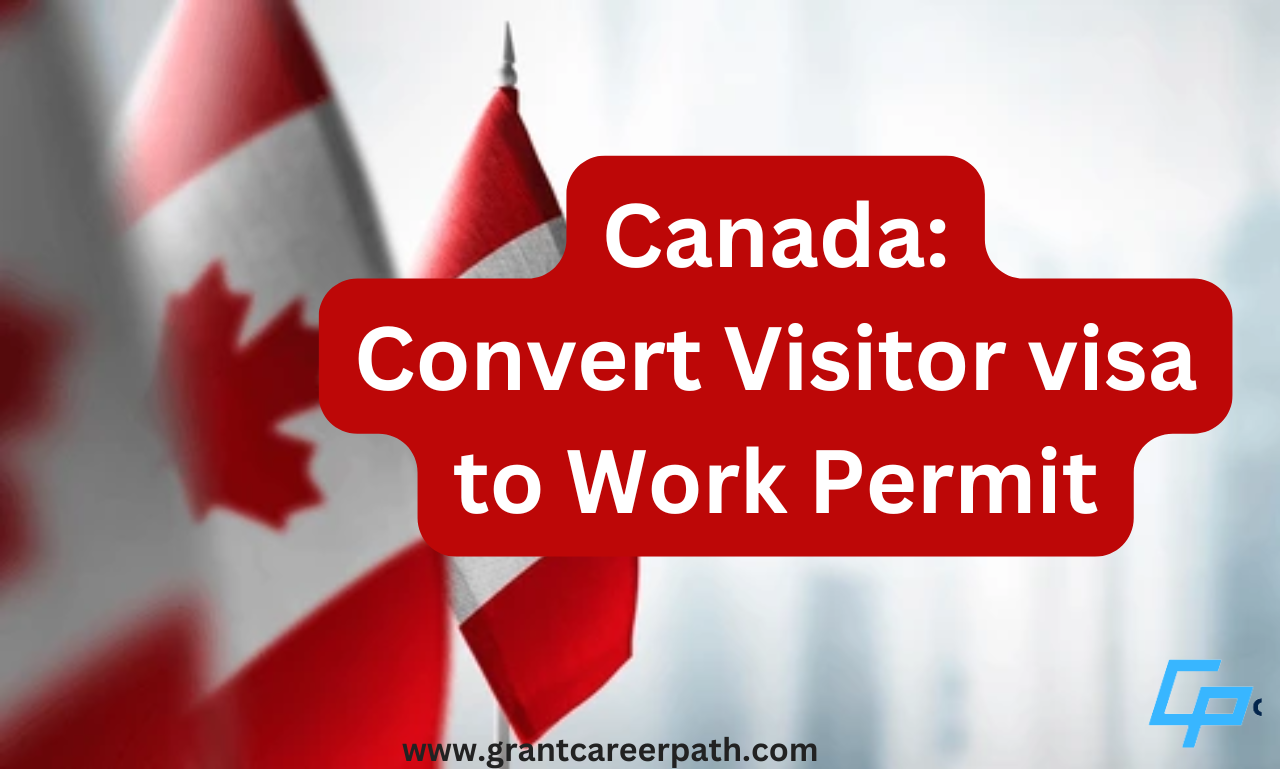If you’re planning to visit Canada on a tourist visa and hope to transition to a work permit, it’s essential to understand the process and what’s involved. While it is possible to apply for a work permit from within Canada under specific conditions, the process is complex and success is not guaranteed.
Canada, with its diverse opportunities and vibrant culture, attracts visitors from all over the world. Many come temporarily to explore the country’s natural beauty, experience its rich heritage, or visit family. However, converting a visitor visa to a work permit can open doors for those looking to extend their stay for professional reasons.
This guide delves into the process of transitioning from a visitor visa to a work permit in Canada. We cover everything from understanding the key differences between these visas to navigating the application process smoothly.
Difference Between Visitor Visa and Work Permit
Visitor Visa: This visa is for individuals who wish to visit Canada for tourism, leisure, or to see friends and family. It is strictly for non-work purposes. If you hold a visitor visa, you cannot work in Canada; it is solely for visiting purposes.
Work Permit: This permit is for those who wish to work legally in Canada. With a work permit, you are allowed to work for a specific employer or even be self-employed, depending on the conditions of your permit. You can renew work permits if you meet specific requirements, and you may also apply for permanent residency or citizenship in Canada.
Steps to Convert a Visitor Visa to a Work Permit in Canada
Converting a visitor visa to a work permit involves submitting specific documents that outline your qualifications and intent. These may include:
- Job Offer Letter: A formal offer of employment from a Canadian employer, detailing the position, duties, and terms of employment.
- Labour Market Impact Assessment (LMIA): In some cases, employers may need an LMIA to demonstrate the need for foreign workers and the unavailability of Canadian citizens or permanent residents.
- Proof of Qualifications: Documents confirming your qualifications and relevant work experience, ensuring alignment with the job requirements.
- Valid Visa: A visa with validity extending beyond your intended stay in Canada.
- Proof of Funds: Evidence of financial stability to support yourself and any dependents during your stay in Canada.
- Medical Examination: Depending on the duration of stay and country of origin, a medical examination may be required to ensure admissibility to Canada.
Check Another one;
Restaurant Assistant Jobs in UK with Visa Sponsorship 2024 (up to £13 Per Hour)
Eligibility
To take advantage of this approach, you must meet certain eligibility criteria:
- Valid Visitor Status: You are in Canada with lawful visitor status.
- Job Offer in Hand: You have a job offer from a Canadian employer. This offer must either be supported by an LMIA or be LMIA-exempt.
- Compliance with Immigration Laws: You must comply with Canadian immigration laws and regulations, including admissibility criteria.
Applying for a Work Permit
Here’s a step-by-step guide to applying for a work permit after securing a job offer in Canada:
- Submit an Application for Work in Canada: Start by securing a job that requires a Canadian work permit. Obtain a job offer from a Canadian employer willing to support your work permit application.
- Secure an Approved Offer Letter with LMIA: Ensure that the company offering the job has an LMIA approval, indicating their authorization to hire foreign workers.
- Compile Necessary Documentation: Gather the required documents, ensuring they are verified and valid.
- Apply for the Work Permit: Once you have secured the job and collected the necessary documents, apply for the work permit. You can complete the application online through the Immigration, Refugees, and Citizenship Canada (IRCC) website or submit a paper application at a Visa Application Centre (VAC).
Under certain circumstances, individuals can convert their visitor visa to a work permit without undergoing the standard LMIA process. This option is particularly relevant for specific categories, such as the International Mobility Program (IMP), which facilitates worker movement across borders for employment purposes.
Conclusion
Transitioning from a visitor visa to a work permit in Canada is a process that requires careful planning and understanding of the eligibility criteria. By preparing the necessary documents and following the outlined steps, applicants can navigate this journey with clarity and confidence. Consulting with licensed immigration professionals can also provide personalized assistance tailored to your unique circumstances, ensuring a smooth transition into the Canadian workforce.




